Plecos are among the most popular aquarium fish kept by fish owners, mainly because they are peaceful and clean the tank extremely well.
But what about the tank size? Which Plecos can actually be kept in a relatively small 10-gallon tank? How do you raise them properly in that tank size? Can other fish live with them?
In this article, I’ll dive into these questions and many more, so you leave with all the information you need. Let’s get started.
What Plecos Can Live In a 10-Gallon Tank?
Plecos that can fit in 10 gallons should be small on average and stay small. Here’s what you should know:
1. Clown Pleco (Panaqolus maccus)
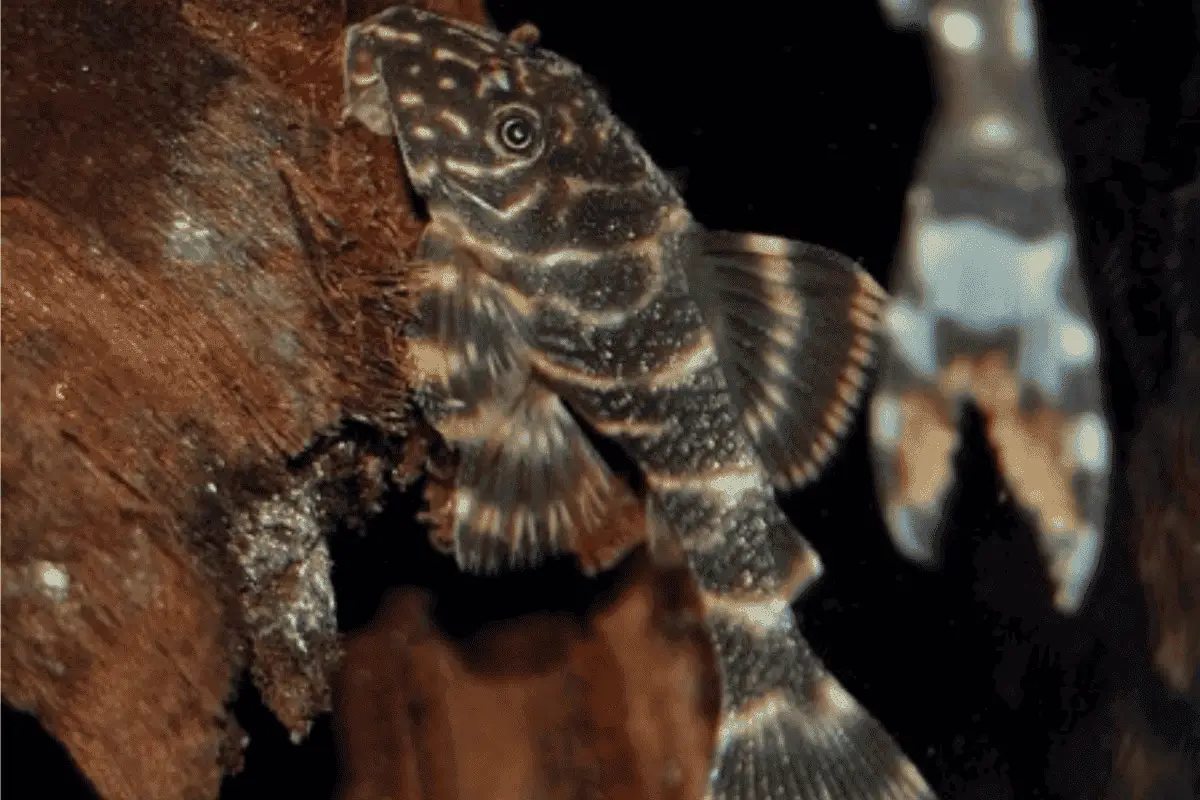
The Clown Pleco is a captivating and compact species, ideal for smaller aquariums.
- Size Matters: Growing up to 3.5-4 inches, this pleco won’t overpopulate a 10-gallon tank. Ensure adequate hiding spaces to make them feel secure.
- Dietary Needs: They lean heavily on wood for nutrition. Incorporate driftwood into the tank setup, allowing them to graze and aiding digestion.
- Peaceful Nature: Being serene, they can share space with non-aggressive species. Monitor tank interactions, ensuring no territorial disputes.
- Aesthetic Appeal: Their intricate patterns are eye-catching. Use subtle lighting to accentuate their colors and patterns.
2. Bristlenose Pleco (Ancistrus sp.)

A favorite among aquarists, the Bristlenose’s modest size and interesting look make it a suitable choice.
- Size Management: With a potential length of 4-6 inches, regular tank maintenance is key. Weekly water changes of 20-30% are advisable.
- Balanced Diet: While they enjoy algae, supplement with veggies like zucchini and specialized pleco pellets to meet their dietary needs.
- Social Interaction: Generally peaceful, they can be paired with calm tankmates. However, provide caves for them to retreat and establish territory.
- Unique Features: Their namesake bristles (especially pronounced in males) are a standout. Position them in the tank where their features are easily observable.
3. Pitbull Pleco (Parotocinclus jumbo)

This small, active pleco species offers lively interactions and ease of care in limited spaces.
- Compact Size: At just about 2 inches when mature, they’re a great fit for 10 gallons. But, ensure good filtration due to their active nature.
- Diet Tips: Algae make up their main food source. Offer algae wafers and occasionally blanched veggies for nutrition.
- Active Swimmers: They love to dart around, making the tank lively. However, ensure no strong currents that might stress them out.
- Safety First: These Plecos can be skittish. Having soft substrates and dense plantations can offer them refuge and comfort.
4. Rubber Lip Pleco (Chaetostoma sp.)

The Rubber Lip, known for its adaptable nature, is a delightful addition to smaller aquariums.
- Growth Consideration: They can grow up to 4.5 inches, making tank cleanliness crucial. Invest in a reliable filter and ensure sufficient aeration.
- Varied Diet: Apart from algae, they appreciate a varied diet. Incorporate insect larvae, pleco pellets, and occasional fresh greens.
- Community Player: They generally get along with other peaceful species. Still, monitor for any aggressive tendencies, especially during feeding times.
- Adaptive Nature: They can adjust to various water conditions. However, maintaining a pH of 6.5-8.0 and temperature between 72-78°F ensures their well-being.
5. Peppermint Pleco (Parancistrus nudiventris)

Distinctive for its alluring coloration and pattern, the Peppermint Pleco is another fine choice for enthusiasts with limited tank space.
- Size to Watch: Typically growing up to 3 inches, this Pleco is apt for a 10-gallon setup. Nonetheless, its active demeanor demands a spacious layout within the tank.
- Carnivorous Diet: Primarily meat-eaters, they relish invertebrates like bloodworms. Ensure a diet rich in protein, but occasionally offer veggies for balance.
- Subdued Demeanor: Mostly nocturnal and quiet by day. Use dim lighting or moonlights to observe their fascinating nighttime behavior.
- Aesthetic Elegance: Their peppermint-like stripes are mesmerizing. A darker substrate can make their unique pattern pop, enhancing the tank’s visual appeal.
6. Spotted Bulldog Pleco (Chaetostoma punctatofasciatum)

Known for its tenacious nature, this Pleco boasts delightful spots that add charm to any small aquarium.
- Growth Observance: Growing to about 3.5 inches, tank hygiene is paramount. Incorporate natural elements like rocks for them to cling to and feel at home.
- Omnivore Alert: While they enjoy algae, a diversified diet with plant-based and protein-rich foods is beneficial. Regularly provide algae wafers mixed with occasional brine shrimp or daphnia.
- Sturdy Companions: Being robust, they handle varied water conditions. Ensure a stable temperature between 68-75°F and pH levels between 6.5-7.5.
- Decorative Spots: Their dotted appearance is a delight to behold. Complement their look with plain backdrops to make the spots the focal point.
7. Candy Striped Pleco (Peckoltia vittata)

An endearing name for an equally captivating Pleco, its stripes truly resemble a candy’s allure.
- Size Constraints: A mature Candy Striped Pleco reaches about 4 inches. With its size in mind, avoid overstocking and ensure ample hideouts like caves or driftwood.
- Balanced Feed: Primarily herbivores, they thrive on algae and plant-based foods. Augment their diet with spirulina wafers and fresh greens like spinach or lettuce.
- Peace Lover: Harmonious in nature, they gel well with most non-aggressive tank mates. Always observe the tank’s dynamics, especially when introducing new species.
- Stripe Showcase: Their captivating stripes are their highlight. Opt for lighter substrates or backgrounds to contrast and showcase their vibrant patterns.
Do These Plecos Stay Small?
When it comes to these specific Plecos, yes, they indeed tend to stay small, especially when compared to other members of the Pleco family.
Aquarists often prefer these species for their manageability and suitability for standard-sized tanks.
- Relative Size: Many of these Plecos, like the Clown and Candy Striped, grow to 2-4 inches, unlike the Common Pleco’s 24 inches.
- Tank Considerations: Their compact size makes them ideal for 10 to 30-gallon tanks, providing flexibility for aquarists with limited space.
- Selective Breeding: Aquarists’ preferences have driven breeding of smaller Plecos, ensuring species like Peppermint and Bristlenose remain petite.
How Much Space Do Plecos Need?
Plecos, as a general rule, require ample space to thrive and grow, with the specific amount of space largely depending on the species in question.
While some smaller Plecos can be comfortably housed in a 10-gallon tank, larger species demand tanks of 100 gallons or more.
- Species Variation: Plecos like the Bristlenose or Clown can flourish in 20-30 gallon tanks, while the massive Common Pleco requires at least a 100-gallon space.
- Activity Levels: Plecos are active bottom dwellers, often scouring the substrate. Regardless of their size, they appreciate spacious tanks for movement and exploration.
- Territorial Behavior: Especially during breeding, Plecos can become territorial. Sufficient space, with hiding spots like caves, reduces potential conflicts and stress.
Also Read: Pleco Fish Tank Size
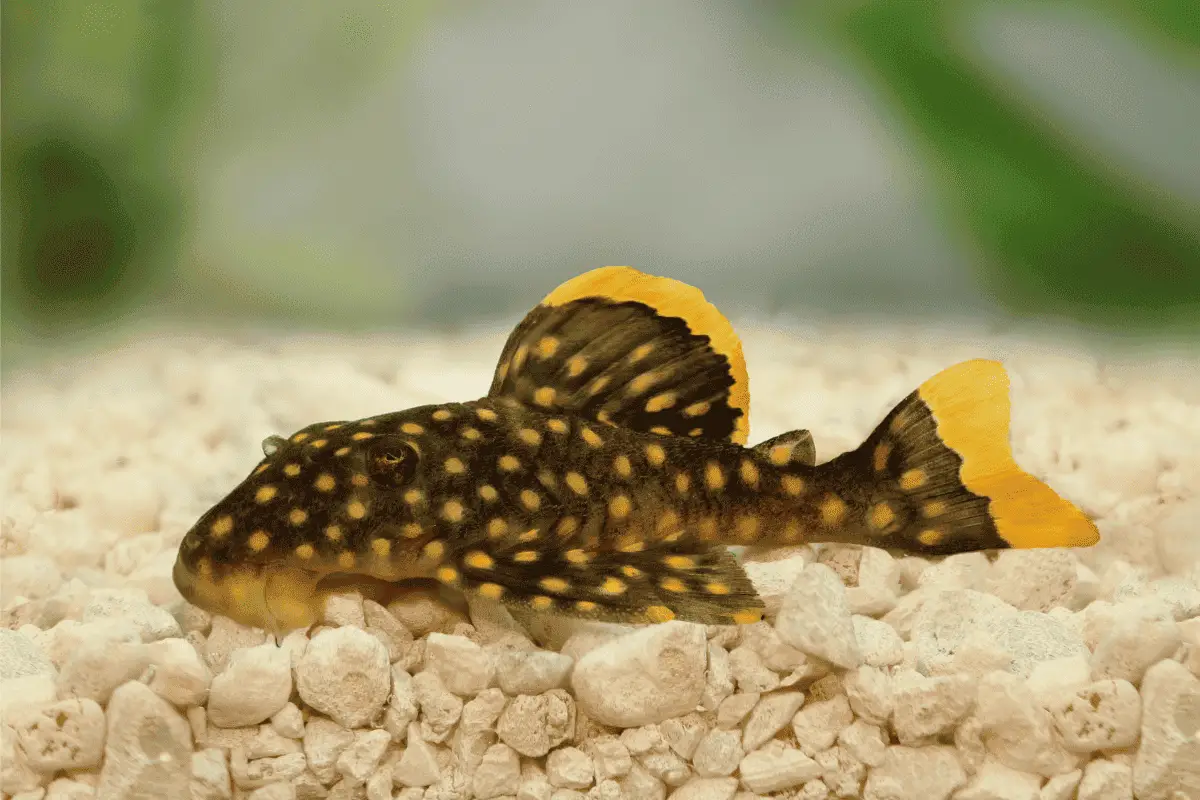
For a better understanding, here’s a concise table of different Plecos species and their recommended tank size:
| Common Name | Recommended Tank Size (gallons) |
| Otocinclus | 10 |
| Pygmy Pleco | 20 |
| Blue Panaque | 30 |
| Zebra Pleco | 30 |
| Queen Arabesque Pleco | 30 |
| Royal Whiptail | 40 |
| King Tiger Pleco | 40 |
| Gold Nugget Pleco | 50 |
| Vampire Pleco | 55 |
| Emperor Pleco | 55 |
| Leopard Cactus Pleco | 70 |
| Green Phantom Pleco | 80 |
| Red Fin Cactus Pleco | 80 |
| Orange Seam Pleco | 90 |
| Blue-Eyed Pleco | 90 |
| Adonis Pleco | 100 |
| Rhinoceros Pleco | 110 |
| Sunshine Pleco | 125 |
| Magnum Pleco | 150 |
| Titan Pleco | 180 |
How to Calculate the Right Tank Size for a Pleco
Here’s a straightforward approach showing how to calculate the right tank size for a random Pleco:
- Determine the adult size of the specific Pleco species you’re interested in.
- Use the “1 Inch Per Gallon Rule”: For every inch of fish, allocate one gallon of water. For a Pleco expected to reach 5 inches, you’d need at least 5 gallons.
- Factor in the tank’s floor space. Plecos are bottom dwellers, so they need more horizontal space. A tank that’s longer is often better than a taller one.
- Adjust for the “1 Inch Per Gallon Rule” if the Pleco is broad or particularly active. For instance, a bulky 5-inch Pleco might be better in a 10-gallon tank rather than a 5-gallon one.
- Always round up. If calculations suggest a 27-gallon tank, it’s best to go with a 30-gallon tank to ensure comfort.
Example:
If you have a Pleco expected to reach 7 inches in length and it’s an active species:
- 7 inches x 1 gallon/inch = 7 gallons.
- Given its activity, double the space = 14 gallons.
- Round up for safety and comfort = Opt for a 20-gallon tank.
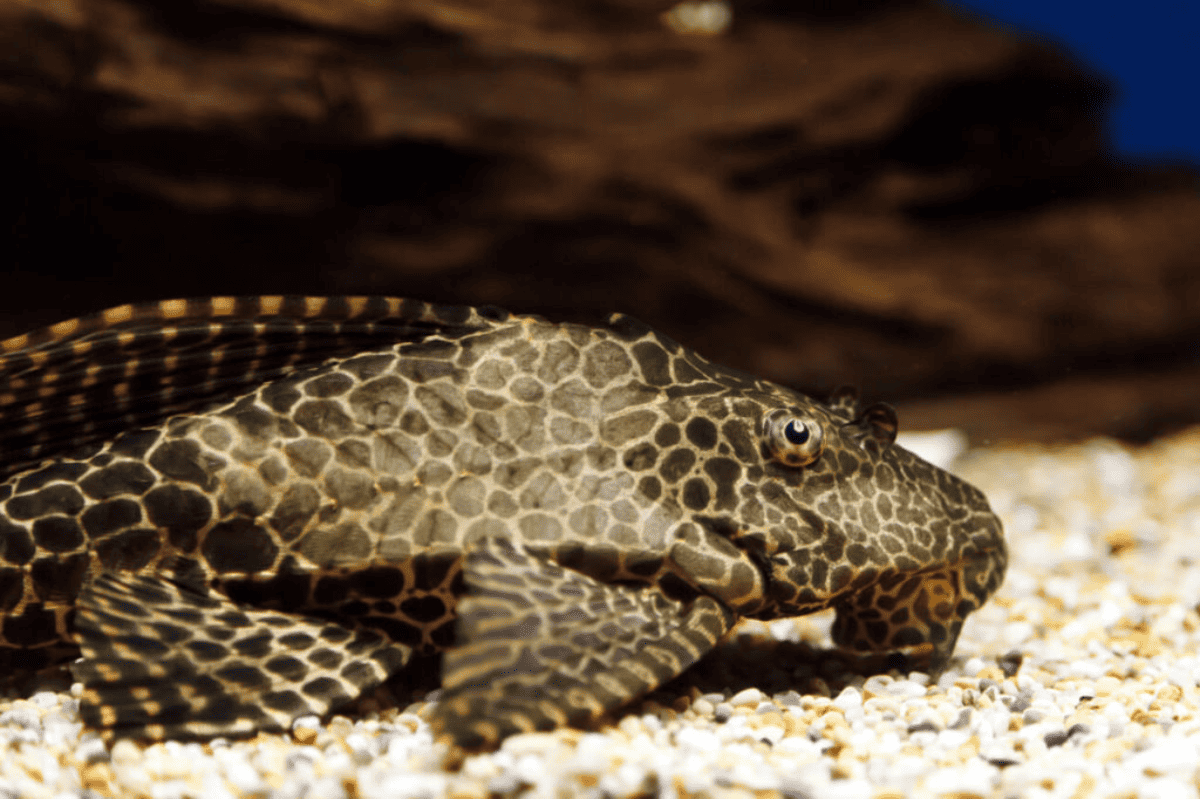
Which Plecostomus Is the Smallest?
Among the vast family of Plecos, the Otocinclus holds the title for being the smallest.
These petite Plecos, often called “Otos” or “Dwarf Suckermouths,” are favored for their diminutive size and diligent algae-eating habits.
- Size Comparison: While many Plecos range between 4-24 inches, the Otocinclus averages a mere 1-2 inches in adulthood, making them a perfect fit for smaller aquarium setups.
- Tank Companions: Due to their size, Otocinclus Plecos are less intimidating to other fish, allowing for peaceful coexistence in community tanks with other small species.
- Diet and Behavior: Despite their size, Otocinclus Plecos are voracious algae eaters, helping to keep tanks clean. However, their small stature demands careful feeding to ensure they get adequate nutrition amidst larger tank mates.
Also Read: Can You Keep Plecos In A 5-Gallon Tank?
Can a Common Pleco Live in a 10-Gallon Tank?
No, a Common Pleco cannot thrive in a 10-gallon tank.
While young Common Plecos might temporarily reside in smaller tanks, as they grow, such a confined space becomes unsuitable and even harmful.
- Growth Potential: Common Plecos can grow up to 24 inches in length. A 10-gallon tank is far too restrictive for a fish of this size, leading to stunted growth and stress.
- Space to Roam: Plecos are active bottom dwellers. The limited floor space of a 10-gallon tank doesn’t provide the necessary room for them to move, forage, and express natural behaviors.
- Waste Production: As large fish, Common Plecos produce significant waste. A small tank cannot efficiently dilute or handle the increased bioload, leading to water quality issues.
- Long-Term Health: Keeping such a large Pleco in a confined space can lead to health problems, decreased life expectancy, and behavioral issues.
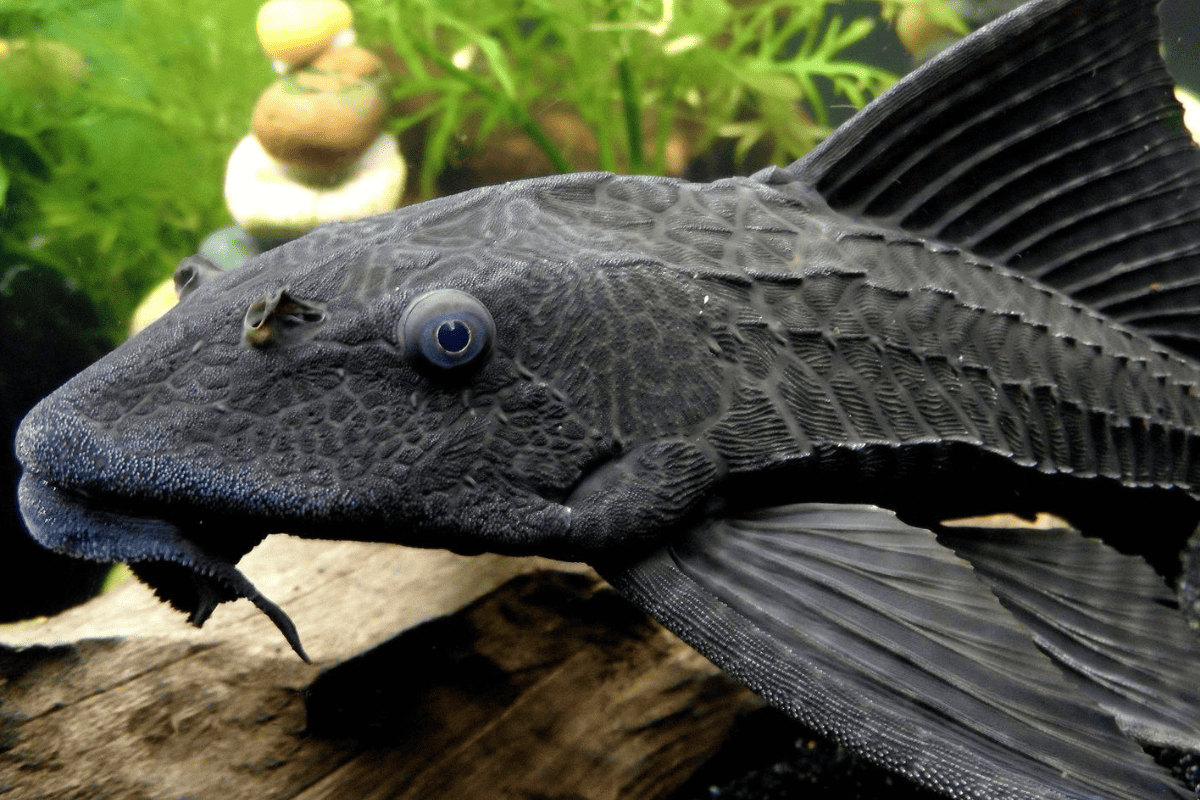
Tips for Keeping Plecos in a 10-Gallon Tank?
Plecos, even small species, require specific care in a 10-gallon tank. Proper attention to their needs ensures a thriving environment:
- Research Species: Choose smaller Plecos like the Otocinclus, which stays around 1-2 inches, making it ideal for a 10-gallon setup.
- Monitor Water Quality: Use a test kit; aim for ammonia and nitrite at 0 ppm and nitrates below 20 ppm. Weekly 20% water changes are beneficial.
- Provide Hiding Spots: Incorporate caves or driftwood. Plecos enjoy shelter, especially during the day due to their nocturnal nature.
- Dietary Needs: Offer a varied diet. Algae wafers, blanched veggies, and occasional protein-rich foods keep them healthy.
- Tank Mates: Choose peaceful, small fish that won’t compete for food or territory. Avoid overcrowded conditions.
- Filter Consideration: Invest in a good-quality filter. Plecos produce significant waste, so efficient filtration is essential.
- Temperature and pH: Maintain a stable temperature between 72-78°F and a pH of 6.5-7.5. Stability is crucial for Plecos’ health.
Can I Grow a Pleco with Other Fish in a 10-Gallon Tank?
Yes, you can grow a Pleco with other fish in a 10-gallon tank, but it’s crucial to select the right Pleco species and compatible tank mates.
Ensuring a balanced environment will make the experience enjoyable for both the fish and the aquarist.
- Choose Compatible Tank Mates: Smaller, peaceful fish like neon tetras, ember tetras, or chili rasboras can coexist harmoniously with dwarf Plecos in a 10-gallon setup.
- Mind the Bioload: Plecos are notable waste producers. Pairing them with light bioload fish ensures the tank doesn’t get polluted too quickly.
- Feeding Considerations: Ensure all species get their dietary needs met. For instance, while Plecos feast on algae wafers, tetras might require small-sized pellets or flakes.
- Establish Territories: While Plecos stick to the bottom, other fish prefer mid to top levels. This vertical separation reduces potential conflicts in a limited space.
- Monitor Behavior: Keep an eye out for aggressive or territorial behaviors. If any fish, including the Pleco, starts bullying, it might be time for tank adjustments or rehoming.
Also Read: Which Plecos Can Live In 20 Gallons?
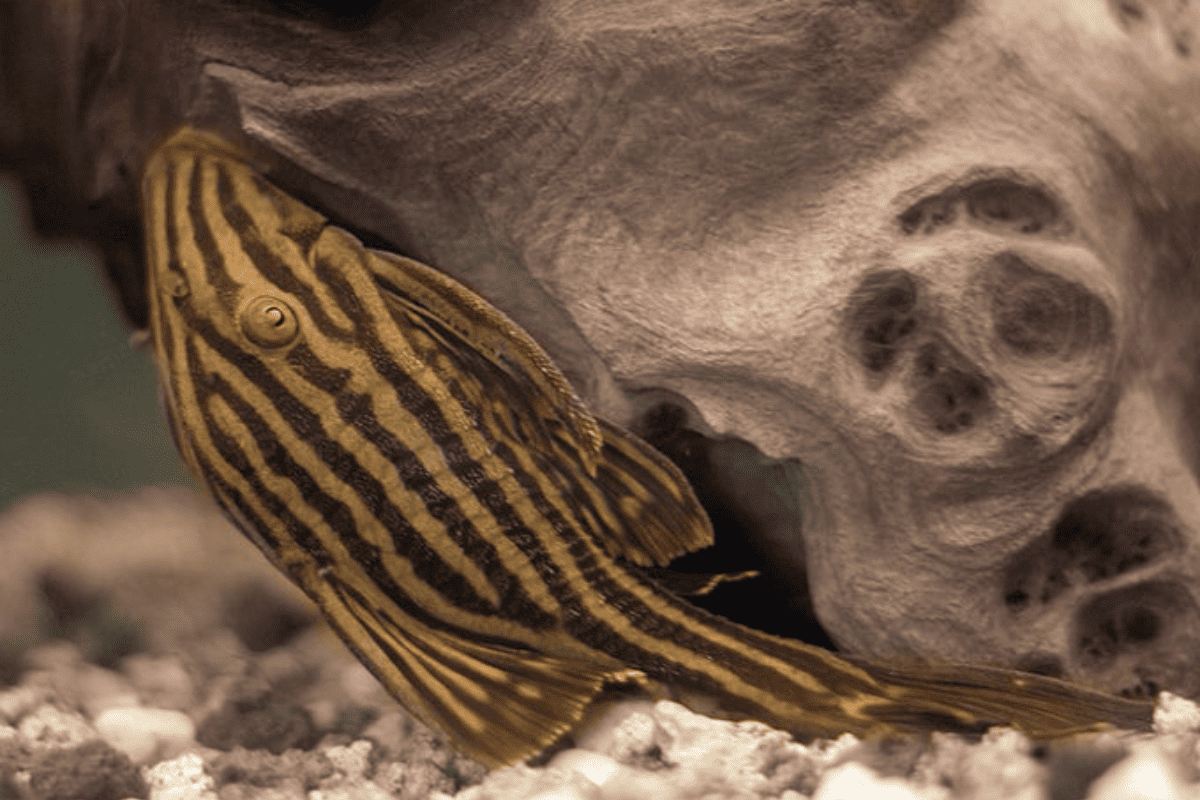
What Algae-Eating Fish Can Go in a 10-Gallon Tank?
A 10-gallon tank offers limited space, but there are several small algae-eating fish that can thrive in it besides Plecos.
These fish help in maintaining cleanliness and add an aesthetic touch to the aquarium.
- Otocinclus Catfish: Commonly referred to as “Otos,” these small fish are diligent at cleaning up algae. They thrive in small groups and live harmoniously with other non-aggressive fish.
- Siamese Algae Eater: They might start out small, but they can reach up to 6 inches in length. So, ensure you’ve got space for a bigger tank or plans to rehome them as they get bigger.
- Dwarf Otocinclus: These are tinier cousins of the Otocinclus and fit nicely in a 10-gallon tank. They’re excellent at tackling brown algae and make for peaceful tank mates.
- Nerite Snails: Although they aren’t fish, these snails are superb at algae control. They’re resilient and their distinct designs enhance the tank’s appearance.
- Amano Shrimp: Famous for their algae-clearing abilities, these shrimp are a wonderful choice. Plus, they play a part in cleaning the tank’s base as scavengers.

Conclusions
For the busy readers, here’s a brief rundown:
- Smaller Pleco species, like the Clown Pleco and Bristlenose Pleco, are well-suited for 10-gallon tanks, blending beauty with a manageable size.
- The Pitbull Pleco and Rubber Lip Pleco are great choices for smaller tanks, but it’s important to ensure their dietary and habitat needs are satisfied.
- Peppermint Pleco and Spotted Bulldog Pleco can provide a distinct look to small tanks, but taking care of their diet and environment is key.
- It’s best to steer clear of housing Common Plecos in 10-gallon tanks due to their large size and space needs, which could compromise their health.
- For a successful experience with Plecos in 10-gallon tanks, holistic care approaches like extensive research, consistent water quality checks, diverse diets, suitable companions, effective filtration, and steady environmental conditions are vital.

